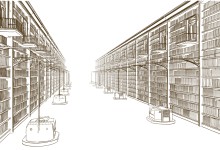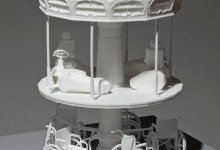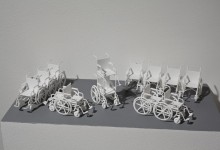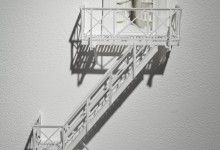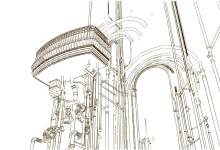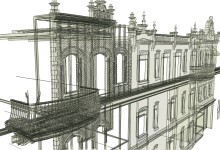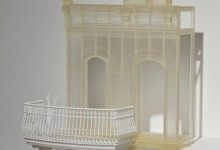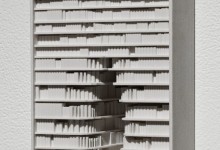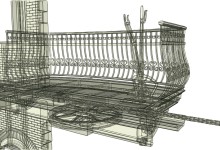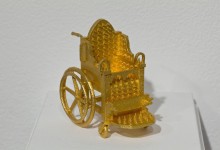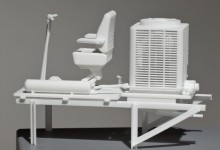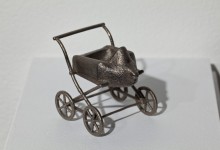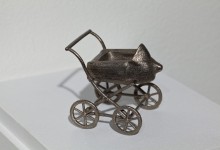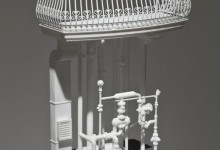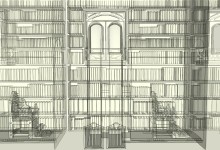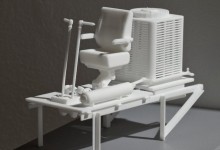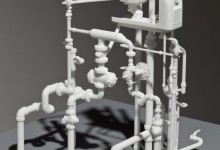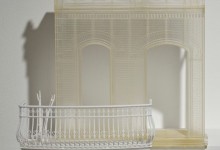Guillaume Lachapelle: Machinations
Text by Marsha Taichman
[…] There is art unless there is so much missing we cannot build a structure around it.. – Kate Hall, from Water Tower, 1998-2000 (after Rachel Whiteread)
Montreal artist Guillaume Lachapelle presents a new collection of works at Art Mûr that is sure to surprise and delight gallery goers. These works are full of pristine lines and beautiful intrigue. He constructs and presents miniatures and life-size pieces that are subversive and unusual upon close examination. In these pieces, scale can be quite skewed. Even when objects are the size that we expect them to be, say, a 15-foot silver gazebo that one may enter and stand inside, they seem small. Lachapelle’s works can be mounted displays of tiny mechanical-seeming devices, apparatuses of unknown origins with no clear purpose, despite the fact that they offer a distinct air of functionality.
In the works that Lachapelle has selected for this exhibition at Art Mûr, his subject matter has moved away from human and animal scenes and delved deeper into free-standing machinations. This means that we will see a greater starkness and a closer focus on the materiality in his constructions. The collection is full of the unexpected and the unusual. A library with a sunken-in, curved interior of wavy shelves of books perches above a fire escape that leads to nowhere, implying that, in the event of a disaster, one will only be faced with another disaster as an alternative. A box structure is filled with the interior of a vehicle, complete with a steering wheel and pedals, with no exterior to situate what kind of vehicle it is, or suggestion of who would be its operator. This box seems to be carved from stone, but is actually made of a mottled grey plastic. An austere balcony is buttressed by a series of pipes, each one rendered impotent by the balcony itself. Rather than being utilitarian, we must instead appreciate the delicate filigree of the balcony’s fence and guardrail, and the intricate tangle of pipes. Lachapelle’s sculptures triumph form over function, every part seems to have a purpose.
What particularly appeals to me about Lachapelle’s art is how it seems to gesture to other artworks as well as the everyday without being derivative. He is skilled at coupling incongruous things.His sculptures channel the nostalgia of Joseph Cornell’s shadow boxes, Matthew Barney’s white plastic frames from the Cremaster cycle, the presence and absence of Rachel Whiteread’s castings of space, and Melvin Charney’s Colonnes allégoriques, a chorus of small buildings on pedestals in the sculpture garden of the Canadian Centre for Architecture. In these same pieces, there are echoes of common constructions like the frameworks of houses, kitchen sinks, and the mechanics of small, complex machines, suggesting both the commonplace and the magical.



